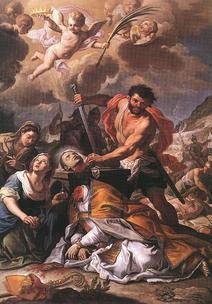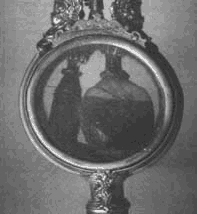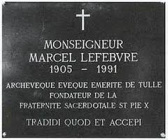
The next day all seven were exposed to the wild beasts in the amphitheatre, but these creatures forgot their natural fierceness, and lay down at the feet of Januarius. Timotheus would have it that this came from charms, and commanded the witnesses of Christ to be beheaded. Thereupon he became of a sudden blind, until Januarius prayed for him; by the which miracle nearly five thousand persons were turned to Christ. But this good turn roused up no gratitude in the Governor, yea, rather, the conversion of so many drave him wild, and in his hot fear to obey the decrees of the Emperors he commanded that the holy Bishop and his companions should be smitten with the sword.
The cities of those coasts strove to obtain their bodies for honourable burial, so as to make sure of having in them advocates with God. By God's will the relics of Januarius were taken to Naples at last, after having been carried from Puzzuoli to Benevento, and from Benevento to Monte Vergine; when they were brought thence to Naples, they were laid in the chief Church there, and there have been famous on account of many miracles. Among these is remarkable the stopping of eruptions of Mount Vesuvius, whereby both that neighbourhood and also places afar off have been like to have been brought to desolation. It is also well known, and is the plain fact, seen even unto this day, that when the blood of Januarius, kept dried up in a small glass phial, is put in sight of the head of the same martyr, it is used to melt and bubble in a very strange way, as though it had but freshly been shed.
September 19, 2012
The blood of St. Januarius liquefied on September 19, his feast day, in the repetition of a familiar miracle in Naples.
St. Januarius, who was martyred during the persecutions of Diocletian, is the patron saint of Naples and of the city’s cathedral. A vial of his blood, preserved by the faithful since the 4th century, regularly turns into liquid form on his feast day. Cardinal Crescenzio Sepe of Naples, who presided at a traditional ceremony in the cathedral, assured a large congregation that the miracle had been repeated.
Many residents of Naples believe that if the saint’s blood does not turn to liquid form, it is a sign that some tragedy will befall the city. The miracle did not occur in 1980, when an earthquake south of Naples caused over 2,500 deaths. In the most distant past, the absence of the regular miracle was associated with military losses, volcanic eruptions, and outbreaks of the plague.
Scientists have been unable to explain why the saint’s blood, which ordinarily remains in solid form, liquefies on such frequent occasions. The Church has never formally pronounced on the miracle, although the Archbishop of Naples traditionally leads the ceremony at which the vials are placed upon the cathedral altar and the miracle is proclaimed.





